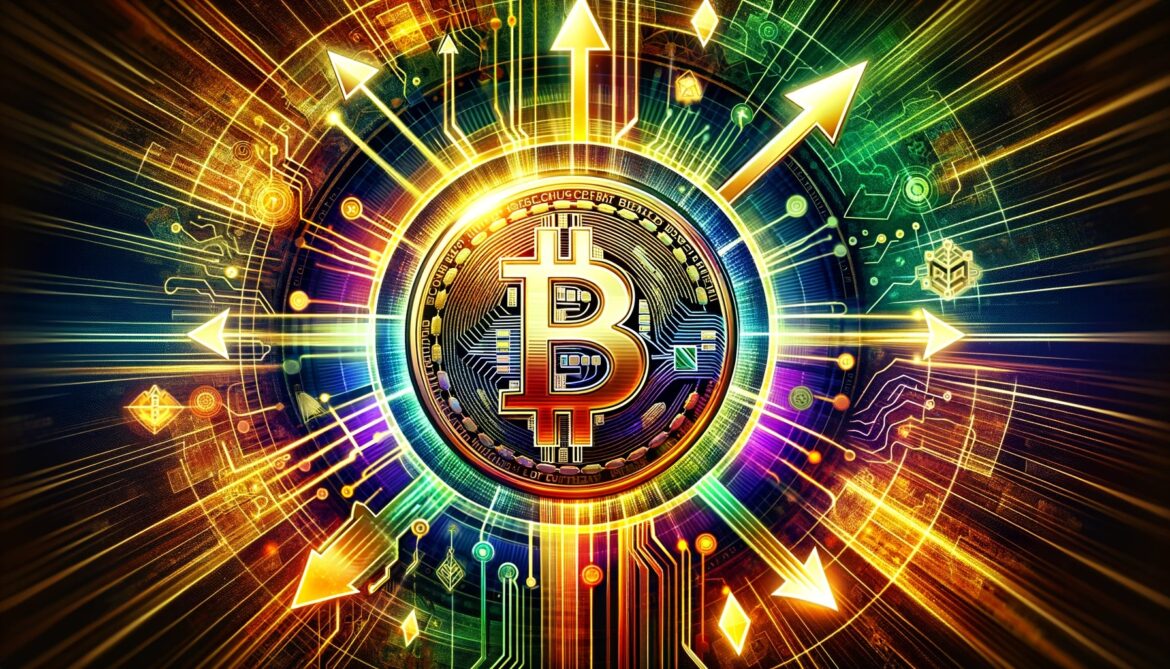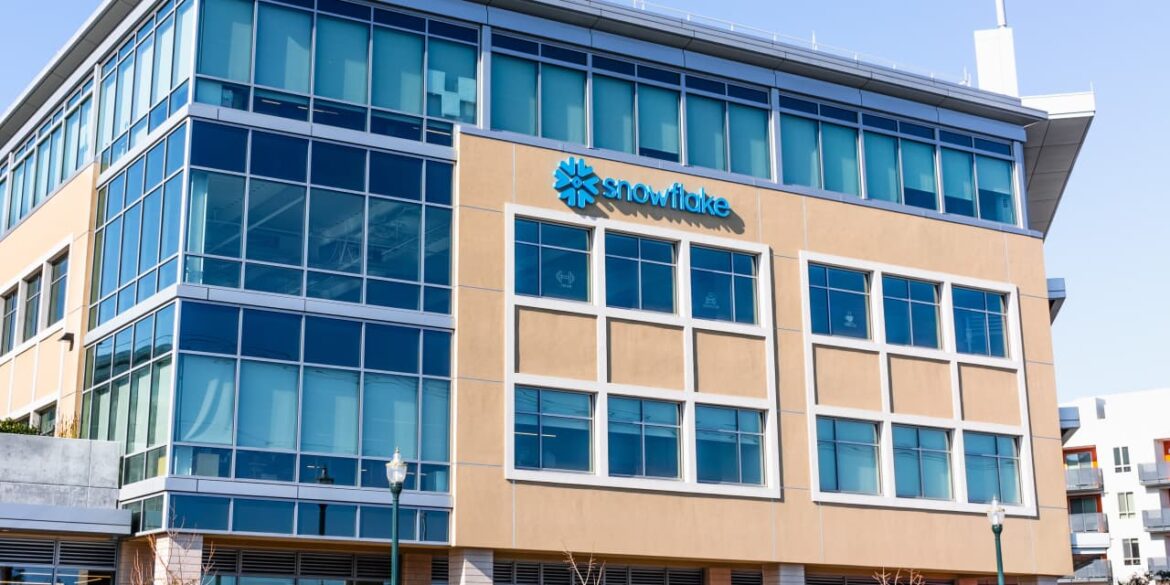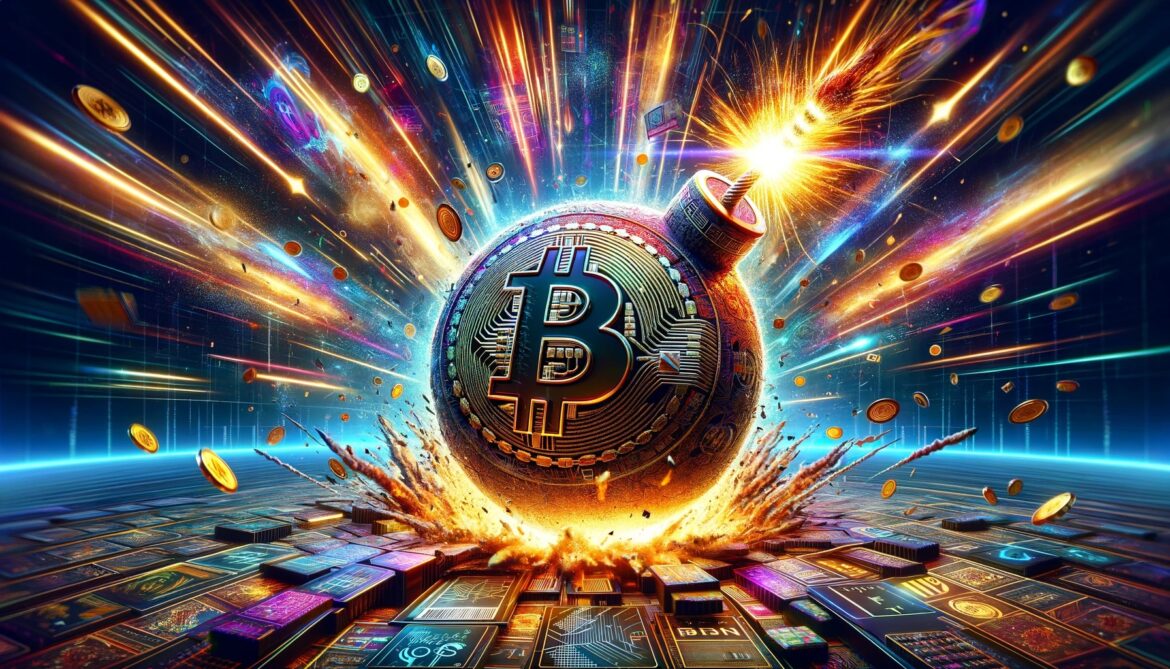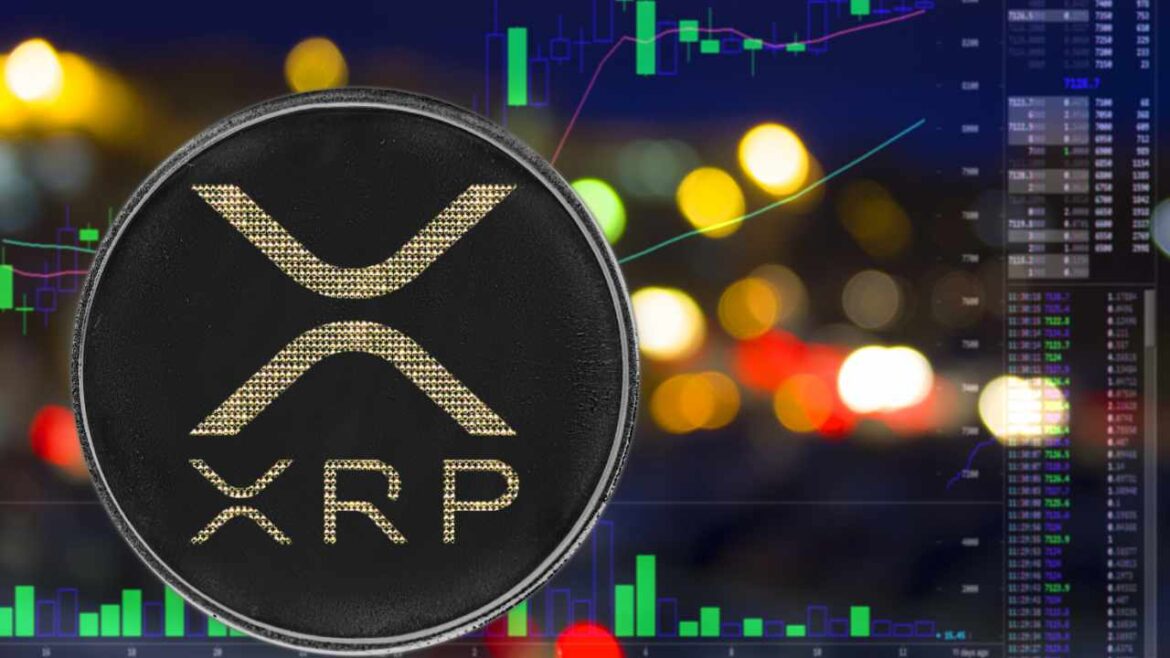
Shares of fashion brand Fossil Group Inc. jumped 8.5% in after-hours trading Wednesday after Kosta Kartsotis stepped down as chief executive and the company announced a strategic review amid pressure from an activist investor.
Source link
CEO
JPMorgan CEO Jamie Dimon Says Artificial Intelligence (AI) “Can Do Things That the Human Mind Simply Cannot Do.” 1 Stock to Buy if He’s Right.
In an interview last week, JPMorgan Chase CEO Jamie Dimon waded into the debate regarding the advent of artificial intelligence (AI) and the potential applications of this groundbreaking technology. While some market watchers suggest there’s simply too much hype around these next-generation algorithms, Dimon disagrees.
“When we had the internet bubble the first time around … that was hype. This is not hype. It’s real,” Dimon told CNBC’s Leslie Picker in an interview. He went even further, arguing that AI will eventually “be used in almost every job” and could even cure cancer, “because it can do things the human mind simply cannot do.”

Image source: Getty Images.
One AI stock to buy if Dimon is right
One company that’s been at the cutting edge of AI for more than two decades is Palantir Technologies (PLTR 1.15%). The company was initially envisioned as a way to dig through public and intelligence databases to make needed connections that would help detect potential terrorism and stop those responsible before they could mount an attack.
However, Palantir soon discovered that the same AI-powered data analytics — if let loose on enterprise data — could provide actionable intelligence that companies can use to gain an edge. Palantir’s software can be customized for a variety of use cases, providing data analysis and visualization, detecting patterns in the data that might be missed by humans, and helping businesses make data-driven decisions.
The results are telling. In the fourth quarter, Palantir’s revenue grew 20% year over year to $608 million, driven by U.S. commercial revenue that grew 70%. The company also logged its fifth consecutive quarter of generally accepted accounting principles (GAAP) profitability.
Most recently, Palantir developed its Artificial Intelligence Platform (AIP), a generative AI tool that integrates with Palantir’s existing systems, providing feature-rich AI-powered functions in a system that “can be up and running in as little as a few hours,” according to the company. As a result, Palantir’s product pipeline is more robust than ever.
That highlights why Palantir is the one stock to buy as the adoption of generative AI gains steam.
JPMorgan Chase is an advertising partner of The Ascent, a Motley Fool company. Danny Vena has positions in Palantir Technologies. The Motley Fool has positions in and recommends JPMorgan Chase and Palantir Technologies. The Motley Fool has a disclosure policy.
In a series of statements made on X (formerly Twitter), Marc van der Chijs, the CEO of the publicly traded Bitcoin mining firm Hut 8, shared an optimistic outlook on the future of Bitcoin, suggesting that the cryptocurrency may be on the brink of a ‘supercycle.’ “I think I have never been more bullish about Bitcoin than I am right now,” he remarked, pointing to the cryptocurrency’s recent performance and the absence of widespread hype as a prelude to what he terms a ‘supercycle.’
Understanding the concept of a ‘supercycle’ is crucial to grasping van der Chijs’ perspective. Unlike regular market cycles that see periodic rises and falls, a supercycle in the Bitcoin domain refers to an extended period of bullish growth over several years. This phase is characterized by a substantial increase in adoption, demand, and price, often leading to far-reaching economic implications.
In essence, a supercycle marks a paradigm shift where the asset’s value escalates dramatically, supported by a continuous inflow of investment and a growing consensus about its long-term viability. To come to this conclusion, Van der Chijs’ prediction hinges on several observations and trends within the Bitcoin sector.
Why A Bitcoin Supercycle Could Be Possible
First, he notes a significant shift towards Bitcoin ETFs by funds, including yesterday’s landmark announcement from Blackrock’s Strategic Income Opportunities Fund. This movement signifies a robust institutional interest that could feed a constant stream of investment into Bitcoin, setting the stage for a supercycle.
“This will be a constant flow of new money into the ETFs. […] The flows into the ETF are getting bigger, not smaller,” van der Chijs remarked. With financial advisors poised to recommend Bitcoin ETFs to clients following a regulatory settling period, van der Chijs sees a torrent of new capital on the horizon. This anticipation is not unfounded, considering the groundbreaking success of the Bitcoin ETF launch, which he cites as “the most successful ETF launch ever.”
Corporate strategies around Bitcoin also play a pivotal role in van der Chijs’ supercycle theory. He points to Microstrategy’s aggressive leverage-based Bitcoin purchases as a harbinger of a trend where companies increasingly view Bitcoin not just as an investment, but as a fundamental aspect of their financial strategy. This shift, according to van der Chijs, could prompt other CEOs to follow suit, further accelerating Bitcoin’s ascendancy.
Moreover, a critical mass of financial advisors is on the brink of recommending Bitcoin ETFs to clients, pending the expiration of regulatory and due diligence waiting periods. This opens the gates for substantial new investments from a segment traditionally cautious about direct cryptocurrency investments. “They can’t sell the ETF during the first 90 working days (internal regulations mostly because of DD), although they are fast tracking it for this ETF,” van der Chijs stated.
FOMO And A Self-Fulfilling Prophecy
The speculation around unidentified large-scale Bitcoin acquisitions adds another layer to the supercycle narrative. Van der Chijs alludes to the intrigue surrounding a wallet that has been steadily accumulating Bitcoin, hinting at the involvement of a billionaire possibly akin to Jeff Bezos. “Since November 2023 a wallet has been adding on average about 100 BTC per day, the wallet now contains over 50,000 BTC,” he states, pointing to the potential for influential figures to catalyze broader market movements.
Another argument is potential purchases by nation-states. Although nation-state involvement in Bitcoin has been minimal, with El Salvador being a notable example, any increase in such activities could trigger a domino effect. The participation of nation-states in the Bitcoin market could significantly elevate Bitcoin’s status as a sovereign asset class.
Next, the retail sector remains largely on the sidelines in the current cycle, but van der Chijs anticipates a surge in retail interest following new all-time highs and increased media coverage. This could initiate a FOMO cycle, drawing more investment from traditional asset classes into Bitcoin.
Last, van der Chijs mentions the concept of a self-fulfilling prophecy: As Bitcoin continues to rise without significant dips due to constant new money inflow, more people and institutions will entertain the concept of a supercycle. This, in turn, could lead to increased capital allocation to Bitcoin, making the supercycle more likely.
Macroeconomic Implications Of A Supercycle
Van der Chijs’ theory also touches on the potential macroeconomic implications of a Bitcoin supercycle, predicting a significant shift in wealth and power structures. The redistribution of wealth could see Bitcoin at the center of a new economic order, with traditional asset classes potentially losing ground.
In conclusion, Marc van der Chijs outlines a compelling case for a forthcoming Bitcoin supercycle, supported by a confluence of institutional, corporate, speculative, and retail trends. He acknowledged the speculative nature of his prediction, “Right now I think there is a chance of maybe 10% that this will happen and that chance is (very slowly) going up.”
However, the implications could be massive. “[I]t will change the existing world order. It will suck money out of the stock and bond markets, out of gold and other commodities, and even out of real estate (global housing prices could collapse). This will lead to BTC prices that we can’t even imagine today, potentially millions of dollars per BTC.”
At press time, BTC traded at $67,806.
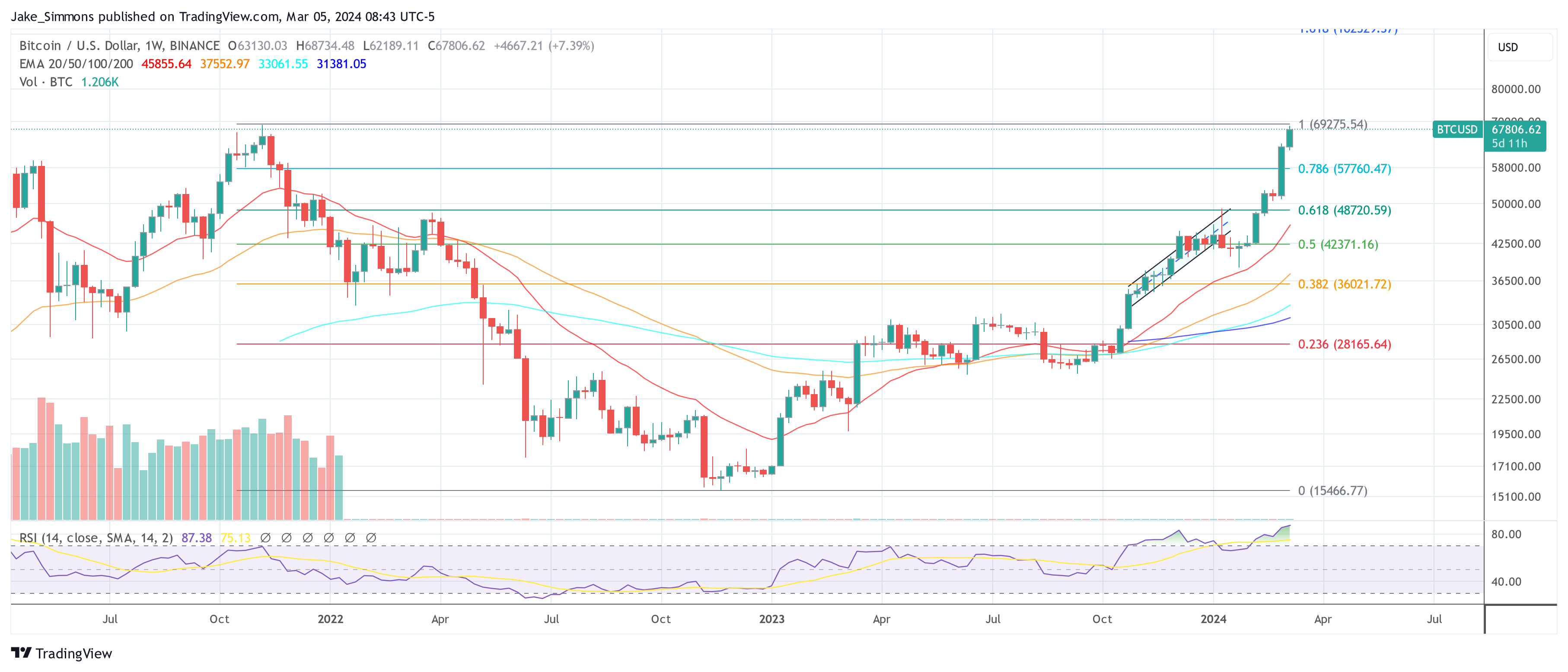
Featured image created with DALL·E, chart from TradingView.com
Disclaimer: The article is provided for educational purposes only. It does not represent the opinions of NewsBTC on whether to buy, sell or hold any investments and naturally investing carries risks. You are advised to conduct your own research before making any investment decisions. Use information provided on this website entirely at your own risk.

Binance is in hot water in Nigeria in the aftermath of its settlement with the U.S. Department of Justice (DOJ). Nigeria’s House of Representatives Committee on Financial Crimes issued an ultimatum to Binance CEO Richard Teng on Friday, according to a local news report.
Ginger Onwusibe, the chairman of the committee, has asked Teng to appear before the committee by March 4. The summons was issued over its alleged involvement in financial crimes, including money laundering and terrorism financing.
Onwusibe warned that Teng’s failure to answer the summons would force the committee to invoke its constitutional powers and take appropriate steps.
In its U.S. plea deal, which received the judge’s approval last week, Binance pled guilty to money laundering and terrorism financing. The exchange also agreed to pay a historic fine of $4.3 billion and operate with monitoring as part of its settlement.
Binance has been uncooperative with the Nigerian committee
Shortly after Binance’s U.S. plea deal was announced, in a letter dated Dec. 12, the committee first asked Binance’s Managing Director to attend a hearing on Dec. 18. Binance was asked to brief the committee regarding Binance’s disregard for Nigeria’s laws.
The Nigerian Committee issued the ultimatum after Binance refused its invitation to address the committee in the past several times.
Onwusibe said:
“The constitution of the Federal Republic of Nigeria has empowered us to protect Nigerians from financial crimes, especially by foreign companies… The allegations of terrorism financing, money laundering, and tax evasion, amongst others levelled against Binance are damning enough.”
Onwusibe said the committee is resolved to fight financial crime and “block the leaks and channels to financing terror,” and “no distraction and manipulation can stop us.”
With Nigeria struggling with recession, the committee is also trying to collect as many tax dollars as possible.
According to Onwusibe, Binance caters to over 10 million Nigerians on its platform. However, the exchange does not pay any taxes in the country. Binance also does not have a physical presence in Nigeria where users can lodge complaints, Onwusibe said, adding:
“The era of exploitation is over and all culprits must be held accountable.”
Binance’s woes in Nigeria are escalating
Last week, the country’s telecom regulator, the Nigerian Communications Commission (NCC), ordered telecom companies to block access to websites of foreign crypto exchanges, including Binance, Coinbase, and Kraken.
On Feb. 26, Nigeria’s Department of State Security detained two Binance executives and confiscated their passports in connection with the investigation into Binance, according to a DLNews report.
A day later, Olayemi Cardoso, governor of the Central Bank of Nigeria, said that Binance Nigeria has witnessed “suspicious flows” of money in 2023. He stated:
“In the case of Binance, in the last one year alone, $26 billion has passed through Binance Nigeria from sources and users who we cannot adequately identify.”
On Friday, the BBC reported that the Nigerian government has ordered Binance to pay $10 billion in compensation. The report also noted that the government believes Binance and its executives manipulated foreign exchange rates through currency speculation and rate-fixing.
In a report on the same day by the Peoples Gazette Nigeria, a Binance spokesperson said that while the exchange was in talks with the government to “resolve issues,” it has not been informed of a $10 billion fine. In the same report, special advisor Bayo Onanuga said that his comments to the BBC were misinterpreted and that he never said the government had finalized the amount of the fine or that Binance was aware of it.
Galaxy Digital Sees ‘Tremendous Global Demand for Bitcoin’ — CEO Says ‘There’s a New Army of Buyers’
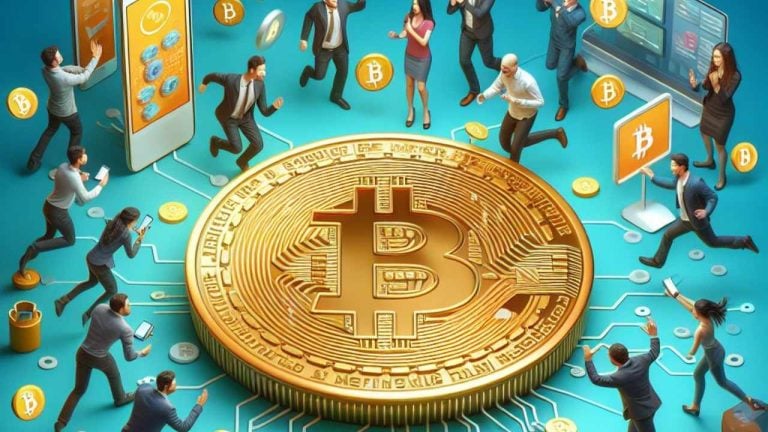 Galaxy Digital CEO Mike Novogratz sees “a tremendous global demand for bitcoin,” emphasizing: “This is probably the first time in the history of bitcoin that we have true price discovery.” Noting that there is “a new army of buyers” and there is also “an army of salespeople,” he expects the price of bitcoin to be […]
Galaxy Digital CEO Mike Novogratz sees “a tremendous global demand for bitcoin,” emphasizing: “This is probably the first time in the history of bitcoin that we have true price discovery.” Noting that there is “a new army of buyers” and there is also “an army of salespeople,” he expects the price of bitcoin to be […]
Source link
Oliver Michel, founder and CEO of German-based venture capitalist firm Tokentus Investment AG, has given a bullish price prediction for the XRP price. According to him, XRP could hit $10 soon enough.
XRP Price To $10 Is Just The Beginning
Michel mentioned during an interview with Der Aktionär, a leading German finance magazine, that he expects XRP to rise to between $5 and $10 in the first wave of its parabolic move to the upside. Interestingly, he added that XRP would eventually hit three to four figures and didn’t seem worried about XRP’s current price action.
Meanwhile, Michel revealed that he is invested in the XRP tokens as he has them both in his family office and with his company, Tokentus. The same applies to Ripple shares, which he stated he purchased through an SPV (Special Purpose Vehicle).
Michel is no stranger to the XRP ecosystem, considering that his company partnered with Ripple last year in an effort to grow and increase the adoption of the XRP Ledger (XRPL). During the interview, Michel also offered his thoughts on Ripple as a “professional company” and sounded so bullish on what the crypto firm was building with its Payment service.
He used the opportunity to elaborate further on how Ripple was simplifying cross-border transactions with the help of the XRPL and XRP tokens. Ripple is known to settle these transactions through its blockchain, with XRP serving as the utility token, and these XRP tokens are then converted to the fiat currency of the recipient’s choice.
XRP To Become The “World Reserve Bridge Currency”
Michel stated that XRP could become the “world reserve bridge currency” once countries implement their CBDCs (Central Bank Digital Currency). Ripple’s XRPL is already being touted as the go-to chain for CBDC settlements. The crypto firm had also revealed that they were already actively working with more than 20 Central banks on CBDC initiatives.
The Tokentus founder also believes it won’t be long before other Central banks fall back on Ripple to help them implement their CBDCs. He noted that the pressure was piling up on these banks to act now to avoid an impending economic collapse. XRP is expected to play an integral role when this all happens.
Ripple’s XRPL also looks set to act as the intermediary between all these CBDCs when the time comes. Bitcoinist once reported how the network’s clawback feature boosts the prospects of CBDCs being implemented on it.
At the time of writing, XRP is trading at around $0.58, down over 1% in the last 24 hours, according to data from CoinMarketCap.
XRP at $0.58 | Source: XRPUSD on Tradingview.com
Featured image from Analytics Insight, chart from Tradingview.com
Disclaimer: The article is provided for educational purposes only. It does not represent the opinions of NewsBTC on whether to buy, sell or hold any investments and naturally investing carries risks. You are advised to conduct your own research before making any investment decisions. Use information provided on this website entirely at your own risk.
FuboTV CEO slams ‘pernicious’ rivals Disney, Fox and WBD amid streaming lawsuit

FuboTV Inc. CEO David Gandler has slammed Walt Disney Co., Fox Corp. and Warner Bros. Discovery Inc. amid the sports-first TV-streaming company’s lawsuit against its rivals.
Last month FuboTV
FUBO,
filed a lawsuit to block the new sports-streaming joint venture from Disney’s DIS ESPN, Fox FOX and Warner Bros. Discovery WBD, which is scheduled to premiere this fall.
Gandler addressed the issue when FuboTV reported its fourth-quarter results before market open Friday. “These results are especially impressive given the years-long challenges Fubo has faced as a result of what we believe have been anticompetitive practices by The Walt Disney Company, Fox Corp. and Warner Bros. Discovery,” he said, in a statement.
“As evident in the antitrust lawsuit we filed against these parties last month, their proposed sports-streaming joint venture is only the latest example of the pernicious practices they have inflicted to suppress our business and harm consumers.”
He added: “We are asking for an opportunity to compete fairly as a business, and to offer consumers a streaming option that gives them the channels they want, and at a fair price.”
Related: FuboTV sues to block ESPN, Warner, Fox sports-streaming venture
Fox and Warner Bros. Discovery have not yet responded to a request for comment on this story. ESPN declined to comment.
FuboTV shares rose in premarket trades, but were down 8.2% midmorning Friday despite the streaming company’s narrower-than-expected loss and better-than-expected revenue in its fourth-quarter results.
The company reported a net loss of $71 million, or 24 cents a share, after a net loss of $95.9 million, or 48 cents a share, in the same period last year. Analysts surveyed by FactSet were expecting a loss of 31 cents a share. On an adjusted basis, FuboTV reported a loss of 17 cents a share, beating the FactSet estimate of a loss of 24 cents a share.
Total revenue grew 28% to $410.2 million, beating the FactSet consensus of $398 million. Subscription revenue was $370.1 million, up from $284.9 million in the prior year’s quarter, and advertising revenue increased to $39 million from $33.9 million in the same period last year. The company also grew North American average revenue per user by 15% year over year to an all-time high of $86.65.
Related: FuboTV’s stock plunges 23% in wake of sports-streaming venture from ESPN, Fox, WBD
“Our strong results in North America included 12% year-over-year growth in subscribers, 29% year-over-year revenue growth and a record $86.65 average revenue per user (ARPU),” Gandler said in the statement. “The quarter also marked a healthy year-over-year improvement in profitability and cash usage, reflecting the success of our continuing initiatives focused on adding efficiency across our operations. We remain confident in achieving our 2025 positive cash flow goal.”
Free cash flow was negative $5.85 million, but that marked an improvement from negative $20.56 million in the prior year’s quarter.
For 2024, FuboTV is forecasting 2.055 million to 2.095 million total paid subscribers and $1.536 billion to $1.56 billion total revenue. Analysts surveyed by FactSet were looking for 2.119 million subscribers and revenue of $1.624 billion.
FuboTV shares have fallen 42.9% in the last three months, compared with the S&P 500 index’s
SPX,
gain of 11.2%.

Snowflake Inc.’s stock was tumbling more than 20% in Wednesday’s extended session after the company underwhelmed with its outlook and announced that its chief executive has left that post.
For the fiscal first quarter, Snowflake
SNOW,
models $745 million to $750 million in product revenue, whereas analysts tracked by FactSet had been calling for $759 million.
Looking at the full fiscal year, Snowflake is calling for $3.25 billion in product revenue, whereas analysts had been modeling $3.43 billion.
The company generated a fiscal fourth-quarter net loss of $169.9 million, or 51 cents a share, compared with a loss of $207.2 million, or 64 cents a share, in the year-before period.
On an adjusted basis, Snowflake earned 35 cents a share, whereas it earned 14 cents a share a year before. Analysts surveyed by FactSet were modeling 18 cents in adjusted earnings per share.
Snowflake’s revenue rose to $774 million from $589 million a year prior, while analysts had been looking for $760 million. The company generated $738 million in product revenue, whereas the FactSet consensus was for $716 million.
“We are successfully campaigning the largest enterprises globally, as more companies and institutions make Snowflake’s Data Cloud the platform of their AI and data strategy,” Chairman Frank Slootman said in a release.
Snowflake announced separately that Slootman has stepped down from the CEO post “effective immediately.” Sridhar Ramaswamy, previously the company’s senior vice president of AI, is taking on the position.
The company had $5.2 billion in remaining performance obligations, up 41% from a year before. Snowflake also called out that 461 customers were doing more than $1 million of trailing-12-month product revenue.
Despite the landmark launch of spot Bitcoin Exchange-Traded Funds (ETFs) spearheaded by industry behemoths BlackRock and Fidelity—ranking among the top five ETF launches in their initial month of all time—BTC’s price response has been notably subdued. Prior to the launch of these EFTs, BTC soared to a peak of $49,040 on January 11.
Fast forward to today and BTC is currently settling at $51,000, marking a modest appreciation of 4.3%. This tepid performance has puzzled market observers, particularly in light of massive net inflows of $5.278 billion into all Bitcoin ETFs within a mere six-week span. These could have been even significantly higher if there would have been $7.398 billion in outflows from Grayscale’s GBTC.
The Bombshell Discovery
Yet, CryptoQuant CEO Ki Young Ju may now have found the “real” reason that has had an even bigger impact on Bitcoin’s price action in recent weeks. Ju’s analysis highlights the transfer of over 700,000 BTC to Over-The-Counter (OTC) desks predominantly utilized by miners in the weeks succeeding the spot Bitcoin ETF approvals—an equivalent of approximately $35.6 billion at current prices.
He shared the below chart and stated: “700K BTC has moved to OTC desks used by miners over the past three weeks following spot Bitcoin ETF approval.” This revelation has sparked a reevaluation of the impact of such substantial transfers on the market dynamics of Bitcoin.

Ju later corrected his statement slightly and explained, “Got some questions about the data accuracy. These OTC addresses are not only used by miners. It could be used by other whales. We’ll let you know what addresses caused this spike,”acknowledging the complexity and multifaceted nature of these transactions.
The Bitcoin OTC Mechanism Explained
OTC desks facilitate direct transactions between two parties, unlike open exchanges where orders are matched among various participants. This method of trading can handle large volumes of Bitcoin without immediately affecting the market price.
When substantial amounts of BTC are bought or sold on public exchanges, the sudden increase in supply or demand can lead to significant price volatility. By opting for OTC transactions, large buyers, such as ETF issuers, can accumulate Bitcoin in vast quantities without triggering a steep price increase that would inevitably follow if these purchases were made on spot markets.
Thus, Ju theorizes that the issuers behind the newly launched Bitcoin ETFs are strategically purchasing Bitcoin via OTC desks. This approach serves a dual purpose: it allows these entities to fulfill the demand from ETF investors by securing enough Bitcoin to back the ETF shares while simultaneously mitigating the immediate price impact that such large-scale purchases would have if conducted on open exchanges.
The essence of Ju’s claim is that if the 700,000 BTC had been bought on the spot market instead of through OTC channels, the influx of demand would have likely propelled Bitcoin’s price significantly higher than the observed 4.3% increase. This subdued price action, therefore, could be attributed to the strategic use of OTC transactions by ETF issuers and other large-scale buyers.
However, there is also a silver lining. What will happen if the miners can only sell half of the current supply following the upcoming BTC halving in April, but the demand remains? Moreover, this constraint isn’t limited to miners alone.
Given that the OTC supply is finite and likely depleting rapidly, it appears inevitable that a supply shock could impact the market once the OTC reserves are fully tapped. When entities like BlackRock and others are compelled to purchase Bitcoin on the open market to back up their ETFs, the BTC price could react swiftly.
At press time, BTC traded at $51,030.

Featured image created with DALL·E, chart from TradingView.com
Disclaimer: The article is provided for educational purposes only. It does not represent the opinions of NewsBTC on whether to buy, sell or hold any investments and naturally investing carries risks. You are advised to conduct your own research before making any investment decisions. Use information provided on this website entirely at your own risk.
Beyond Bitcoin: Ripple CEO Says Approval of Multiple Crypto ETFs ‘Inevitable’ — Embraces Idea of Spot XRP ETF
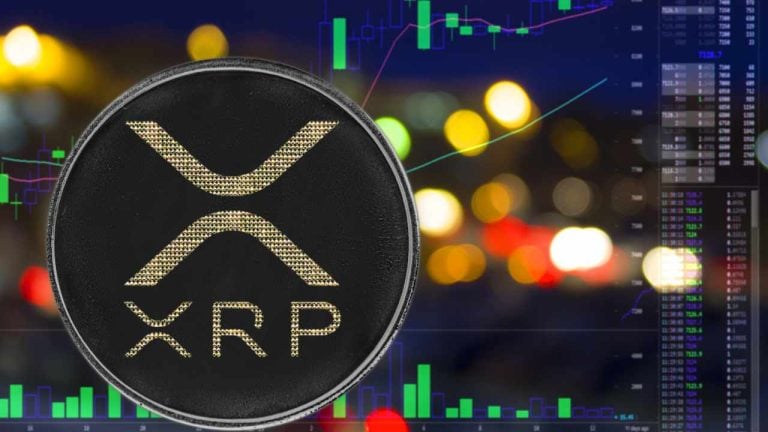 Ripple CEO Brad Garlinghouse believes that the U.S. Securities and Exchange Commission (SEC) will approve spot exchange-traded funds (ETFs) based on crypto tokens other than bitcoin. “I think it’s inevitable that there’ll be multiple ETFs around different tokens,” he stressed, noting that Ripple would welcome an XRP ETF. “In my opinion, it makes these markets […]
Ripple CEO Brad Garlinghouse believes that the U.S. Securities and Exchange Commission (SEC) will approve spot exchange-traded funds (ETFs) based on crypto tokens other than bitcoin. “I think it’s inevitable that there’ll be multiple ETFs around different tokens,” he stressed, noting that Ripple would welcome an XRP ETF. “In my opinion, it makes these markets […]
Source link



